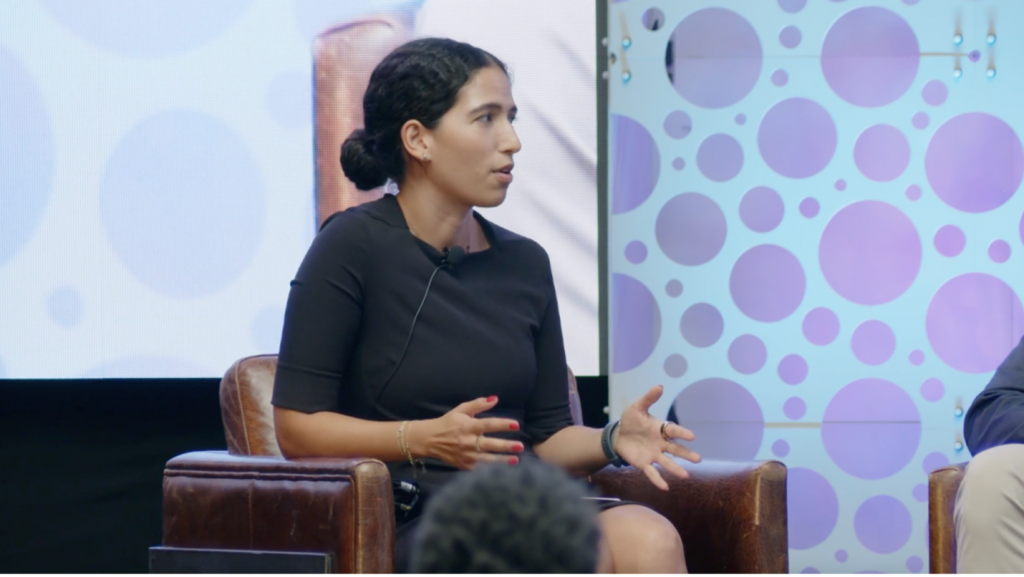Customer success stories: Real-world impacts of climate resilience initiatives

This is a recap of a session from AiDASH Evolve 2024
Summary:
- These utilities face risks and challenges that include acquiring restoration resources after storms, changes in vegetation growth, and changes in wet/dry seasons.
- Having the right data, analyzing that data, and generating actionable insights from that data allow utilities to make meaningful changes, including telling the story of what they’re doing (or not doing) and why.
- This ability to quickly transform data into actionable insights will be crucial for the future. Advancements in technology are exciting, too, but utilities need to maintain and value the core skills and expertise of people like engineers and arborists.
Carl de Haan, Engineering Reliability Manager, Powerco, New Zealand, concisely captured the heart of a panel discussion at AiDASH Evolve 2024 when he highlighted their primary challenge as a utility company. “Telling the story of reliability investments and trade-offs becomes very difficult without the right data,” he said. “We have enormous amounts of information, but how do we package it together? And that’s really what we’re doing now with AiDASH.”
In the session, led by Isabella Espinel, Product Consultant and Customer Success, AiDASH, panelists discussed the challenges they’ve faced in maintaining grid reliability and resilience, and how their partnerships with AiDASH have helped. The panel comprised:
- Carl de Haan, Engineering Reliability Manager, Powerco, New Zealand
- Ryan Moe, Lead Specialist – Vegetation Strategy, National Grid
- Orlando Mckoy, Director of T&D Asset Optimization and PMO, Jamaica Public Service Company
The climate change-related risks utilities are facing today
Each of the panelists, in turn, laid out the challenges they’re facing as climate change-related threats proliferate.
Mckoy explained that as an island utility, it’s not just that Jamaica Public Service Company (JPS) is in the path of hurricanes and tropical storms; it’s a problem of pulling in additional resources in the aftermath of storms. “When we get hurricanes, we’re kind of like on our own. So, it’s kind of a difficult position to be in,” he said, because it’s harder to get support from overseas.
Their vegetation management challenges are somewhat unique. “Major problems for reliability are vegetation and equipment failure,” he said, adding that vegetation is the second highest contributor to their reliability performance. They have to deal with very fast-growing species, like bamboo. “Bamboo can grow as fast as 3 feet overnight,” he noted.
Further, Jamaica has a dry season, too. During that time, a false sense of security can creep in. “Because when your vegetation is not growing as fast, and your outages may not be as frequent, you think that you’re probably doing a good job. But the truth is, you’re not,” said Mckoy. And then rainfall patterns change, and there are fluctuations in terms of performance.

Though National Grid has challenges similar to other utilities, including invasive species and recovering from major storms, Moe elaborated on why longer growing seasons have also been so problematic. “When that happens, [trees] tend to grow faster, [which results in] longer, thinner limbs that can break more easily,” he said, which contributes to more outages.
So they have to adapt. That could mean greater clearances along their lines, which would be difficult, or maybe they need to prune more frequently.
De Haan highlighted how climate change is impacting New Zealand’s energy supply and demand. Longer, drier seasons and more severe storms on the other end are affecting their predominantly hydroelectric generation. They haven’t had much concern about wildfires in New Zealand, historically, but that’s a new threat that’s looming, as well.
“When we look at these challenges … you can’t keep doing what you have done,” he said. “Because it’s unsustainable and unaffordable.”
Success so far
Moe shared impressive results from National Grid’s partnership with AiDASH. Over the past 2 years, after transitioning to a data-driven, condition-based vegetation management strategy, National Grid has seen a 30% reduction in tree-related events, a 38% reduction in CIs, and a 55% drop in customer minutes interrupted on circuits that have been pruned.
“We’re not doing significantly more miles than we were on a typical 5-year cycle. The huge difference is which circuits we’re doing,” said Moe.
Mckoy said that generally, regulators and customers alike have shown general interest and support in terms of the using technology to improve their program, and he sees a big opportunity with AiDASH to modernize how their business operates.
For Powerco, de Haan pointed out how the right data and analytics helps them tell the story behind what they’re trying to accomplish — communicating why they’re not doing something as much as why they are doing something else. “The insights that we’ve got from the trial [are] showing what is possible and how different strategies, different approaches influence things,” he said. “It gives us the ability to have those longer-term discussions with regulators, because we’re looking to build out 5- to 10-year plans, the same as we do our asset management plans.”
Moe echoed, “When you have more data to support what you’re doing and why you’re doing it, it’s always helpful, and it helps tell that story.” He said that regulators ordered another utility to maintain at least a 5-year cycle in Massachusetts, “So having this tool, this additional data to make our case of why we feel this is the best approach to managing our distribution system — it was extremely helpful.”
Regarding the initial results JPS has seen from AiDASH Intelligent Vegetation Management System™ (IVMS™), Mckoy said: “It’s very powerful. I was able to use just the preliminary outputs … to have a more in-depth conversation in terms of our … funding, because for the first time, I could say that if you give me X amount of money, I can do this amount of vegetation.”
He’s already looking to other ways JPS can use AiDASH, particularly for looking at their poles and infrastructure. When he arrived at Evolve 2024, he was pleased and surprised to realized that AiDASH made a solution for that, too. “I thought I was really on the cutting edge, but surely I’m behind!” he joked.
The future changes that tech adoption will foster
The panelists agreed that the ability to quickly transform data into actionable insights will be crucial for the future. The group also highlighted the importance of pairing technology advancements with maintaining core utility skills and expertise.
“The future, in terms of where we’re going, is really going to be defined by us,” said Mckoy.
“The role that AiDASH has played now in terms of partnering with the stakeholders [and] the subject matter experts, in terms of defining what the problems are and creating solutions to address that — I believe that is the way we will get to the future and to the right future.”
He added that utilities will need not just data, but also information in order to make decisions quickly. “The future to me is not necessarily data collection, but actually data processing and the agility to make quick decisions and respond to the problems that are affecting us the most,” he said.
De Haan echoed this need. “We’re used to having a whole lot of programs and data and information, but by the time we get to analyze it, use it, and understand how we should have used it, 4 years have passed, so it’s quite irrelevant,” he said. He’s excited to gain insights not just for vegetation, but for grid reliability, network resilience, and asset performance.
He admonished the need, though, to keep people and their skills and experience front and center. “If you don’t have the right culture or the right skills as you’re bringing this [technology] along with you, you lose the human insights to interpret what it’s telling you.” So, he said, whatever journey you take, you have to bring fundamentally skilled and knowledgeable people like engineers and arborists with you.
“Advancements in technology, they’re always exciting, and there’s always something new,” said Moe. “More accurate satellite imagery will be coming soon. It will allow us to do more things — identify dead trees, diseased trees, [and] eventually help us target different areas of our system where it can identify additional work for us to do to allow us to respond to issues faster before they become a huge problem. I think it’s all very exciting to see where everything’s going.”
The panelists were enthusiastic about continuing to collaborate — with AiDASH, and each other, and the rest of the industry — to develop transferable solutions to shared challenges, including climate change, vegetation management, and emergency response.
Check out more sessions and information from Evolve 2024, and reach out to see the AiDASH Platform in action!
The best collection of tools, tips, guides, and industry stories – straight to your inbox.
Subscribe to our newsletter
